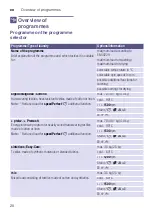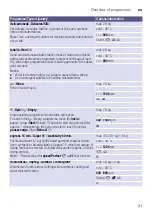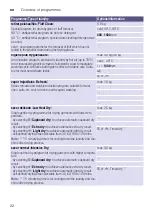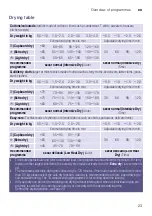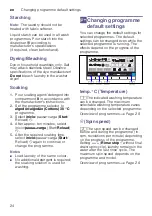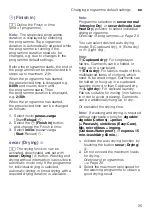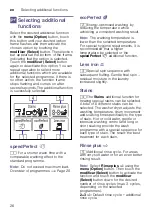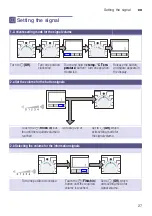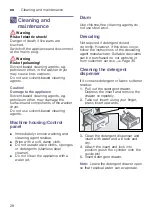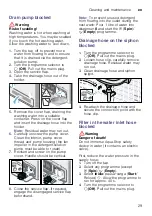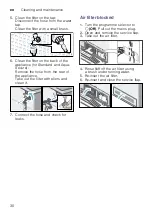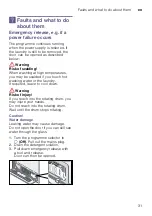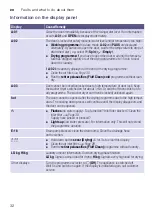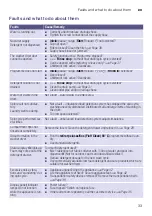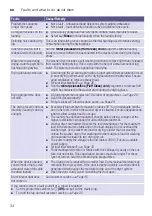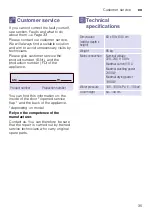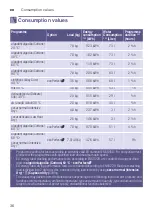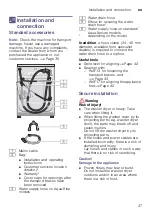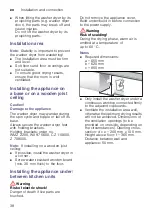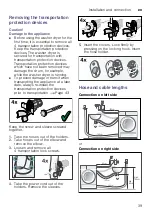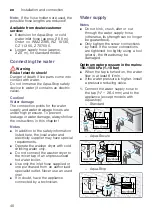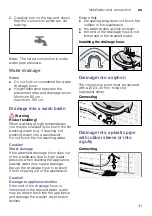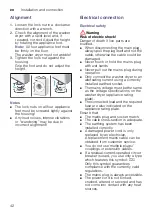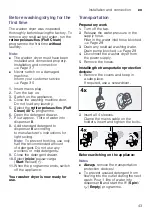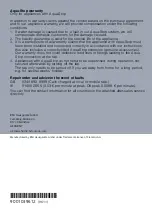
en
Faults and what to do about them
34
Programme sequence
longer than usual.
■
Not a fault – unbalanced load detection system adjusts imbalance.
■
Not a fault – foam detection function active. Additional rinse cycle.
Detergent residues on the
laundry.
■
Occasionally phosphate-free detergents contain water-insoluble residues.
■
Select
q
(
Rinse
) or brush laundry when the laundry is dry.
Spinning noise during dry-
ing.
This is an innovative process known as thermal spinning used to reduce energy
consumption during the drying phase.
Different coloured fluff is
redeposited to the laundry.
Run the
retirar pelusas/fios (Fluff Clean) cold
programme without laundry
inside to remove fluff which has collected in the washer drum during the drying
phase.
Water inlet noise during
drying, water tap symbol is
flashing during drying.
The washer dryer includes a self cleaning function to remove fluff that is released
from laundry during drying. This is done with the help of a small amount of tap
water. The water tap must be opened during drying.
Drying duration extended.
■
According to the air cooling principle, a higher ambient temperature will result
in poor drying performance, so the drying duration will be extended. Ensure
good ventilation to remove exhaust heat.
■
■
Run the
retirar pelusas/fios (Fluff Clean) cold
programme to remove fluff
which has collected in the washer drum during the drying phase.
Drying programme does
not start.
■
Drying programme not selected? Overview of programmes
■
Door not closed properly?
■
Pump is blocked? Clean the drain pump
The drying result is not sat-
isfactory (laundry is not dry
enough).
■
Excessively high ambient temperature (above 30 °C) or inadequate ventila-
tion in the room in which the washer dryer is situated. Ensure adequate venti-
lation to allow surplus heat to escape.
■
The laundry has not been spun well enough before drying - always set the
highest selectable spin speed for all washing programmes.
■
Washer dryer overloaded: Observe the recommendations for the maximum
load in the programme table and on the load display. Do not overload the
washer dryer, as the maximum load for drying is lower than for washing,
unload the washer dryer after washing with the maximum load for washing
and separate the load into two drying cycles.
■
The power supply line voltage is too low (below 200 V). Ensure a suitable
power supply.
■
■
Thick multilayered textiles or textiles with thick fillings dry easily on the sur-
face, but not inside. This equalisation process may take longer. For these
types of textiles, select the timed drying programmes.
When the door is opened,
you will notice that a small
amount of water drips onto
the dried laundry.
■
The drying time is reduced for a smaller load. Some residual moisture may
remain in the dryer system. If the door is opened quickly, a suction effect is
generated which causes the moisture to drip out of the dryer system.
■
Open the door slowly. Avoid wrenching the door open.
Drum interior light does
not come on.
Call customer service
If you cannot correct a fault yourself or a repair is required:
■
Set the programme selector to
$
(Off)
and pull out the mains plug.
■
Turn off the tap and call customer service
Faults
Cause/Remedy

